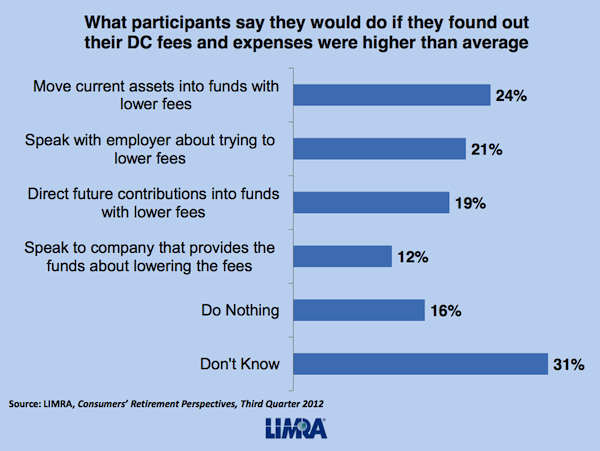One of the more vexing problems facing pre-retirees is when to claim their Social Security benefits. Many people cash in at the first opportunity, age 62, even though each year they wait, their benefit increases until age 70. Perhaps if they could see exactly how much potential income they were passing up, they might wait longer.
Now there’s a software tool that can help them do that. Impact Technology Group in Charlotte, North Carolina, has just introduced a product called Social Security Explorer (SSE) that enables advisors and pre-retirees to model up to hundreds of different Social Security claiming strategies and see how much income each one provides. (To access video, click here.)
The SSE tool requires minimum input—age, projected benefit at full retirement age, longevity expectations, investment rate of return and inflation. The computer does the heavy lifting and shows advisors how much clients would collect monthly and over the course of their presumed life expectancy, depending on which age they choose.
“Often people take their Social Security benefits right away because they don’t know what they want or don’t understand their choices,” said David Freitag, vice-president of marketing at Impact Technology Group.
With SSE, for example, you can show that a single client (with a projected payment at full retirement age of $2,400, a longevity assumption of 85 and an inflation assumption of 2.5%) would receive only $1,800 per month and $660,623 over his or her expected lifetime by claiming at age 62. The SSE tool shows that the same person would collect $3,860 per month and $830,586 over their expected lifetime by delaying benefits until age 70.
Multiplying the options
The SSE tool is even more helpful when sorting through the 81 possible age options (nine per spouse) for married couples. It can also help married couples maximize benefits by comparing the seven different age-based strategies allowed by Social Security, which lead to a daunting 567 potential scenarios. Many of these options allow couples to receive some income while waiting until age 70 to collect maximum benefits. SSE helps advisors explore different outcomes for their clients.
For example, in a one-earner couple, with two healthy spouses, the earner, call him Jim, can elect to file for benefits at 66 (the full retirement age for those born from 1943 to 1954) but suspend collecting them. (Full retirement age is also the age when recipients stop being taxed or penalized for earned income.) Jim’s wife Mary is the same age as Jim. As a stay-at-home mom, she never paid into the Social Security system, but she qualifies for a spousal benefit. She can apply for and collect half of Jim’s benefits, while Jim suspends his separate benefit until he turns 70 and becomes eligible for the maximum benefits on his record.
Jim and Mary can even receive some Social Security benefits to live on while they delay receiving maximum benefits at 70. At full retirement age (66) Jim can file and suspend his benefit. Mary, at 66, can file for “restricted” benefits, or an amount equal to one-half of Jim’s benefit. At age 70, both Jim and Mary can each start collecting their respective full benefits separately, resulting in almost a $1 million lifetime payout.
Of course, to fully enjoy this larger benefit, Jim and Mary have to live past 85. “The wild card is longevity, Freitag told RIJ Advisor. “My parents lived into their 90s, so there’s a strong likelihood I will live to over 85. On the other hand, I have a good friend who has been type I diabetic since age 10. His longevity assumption is age 75 or less. For him the best solution might be taking Social Security benefits at 62.”
Inflation also affects the amount that clients receive. In today’s current environment where interest rates are near zero, “the value of Social Security is magnified intensively.” added Freitag. Not to mention that Social Security automatically includes spousal benefits and built-in inflation protection.
Most clients will have to rely on other sources of income while they delay Social Security, said Steve Sass, program director of the Financial Security Project at the Center for Retirement Research at Boston College. “The fundamental issue is where will they get income to pay their monthly bills?” It’s critical to have some pool of money or insurance set aside for medical emergencies, he said.
In a sense Social Security has become a default safety net for the variability of 401(k)s, says Sass. The baby boom generation is the first cohort that has had a substantial dependence on the 401(k). “For the cohort that is currently retiring, you can’t get any return from bonds. And, if interest rates go up, you will have a capital loss. The government is saying that in a 401(k) world; why not just delay Social Security.”
While people might do better in the stock market, “it will be difficult to get more income from your savings than from delaying Social Security,” Sass told RIJ Advisor.
Sass counsels advisors to make sure their clients anticipate the possibility of a long lifespan. “The risk of living too long is a difficult concept,” he said. “A lot of people think they’re going to die young and use that as an excuse to front-load the benefits.”
But many people will live into their 80s and 90s. “It’s the function of a good financial advisor to get people to understand what they want to do with their money and not to just succumb to momentary temptation,” Sass emphasized.
SSE should make it easier for advisors to show their clients how much they will benefit at different ages and using different strategies, said Freitag. Those decisions are more critical than many clients think and advisors now can show that. As Janet Reno, the vice president for income security at the National Academy of Social Security Benefits, has said: ‘The two most important decisions people make is when to stop working and when to declare Social Security.” Most people conflate the two. But choosing when and how to file for Social Security benefits could create a much more secure future.
© 2012 RIJ Publishing LLC. All rights reserved.




 What does the pie chart reveal? At least one fact stands out: China’s holding of the total federal debt comes in a distant fourth—behind the U.S. government, the U.S. public, and the Federal Reserve. Interestingly, China and Japan have been neck-and-neck for years as the two foreign entities most desirous of exchanging their export-derived U.S. dollars for interest-bearing U.S. Treasury securities.
What does the pie chart reveal? At least one fact stands out: China’s holding of the total federal debt comes in a distant fourth—behind the U.S. government, the U.S. public, and the Federal Reserve. Interestingly, China and Japan have been neck-and-neck for years as the two foreign entities most desirous of exchanging their export-derived U.S. dollars for interest-bearing U.S. Treasury securities. In recent decades, the interest bite has been as high as 19 percent and as low as 9 percent. The chart above shows how the interest bite has tracked for the last 13 years, through December 2011. Mildly surprising is the fact that the current interest bite is no higher than it was ten years ago.
In recent decades, the interest bite has been as high as 19 percent and as low as 9 percent. The chart above shows how the interest bite has tracked for the last 13 years, through December 2011. Mildly surprising is the fact that the current interest bite is no higher than it was ten years ago.